Actisense adds NMEA 2000 insight to W2K-1 with Actisense-i
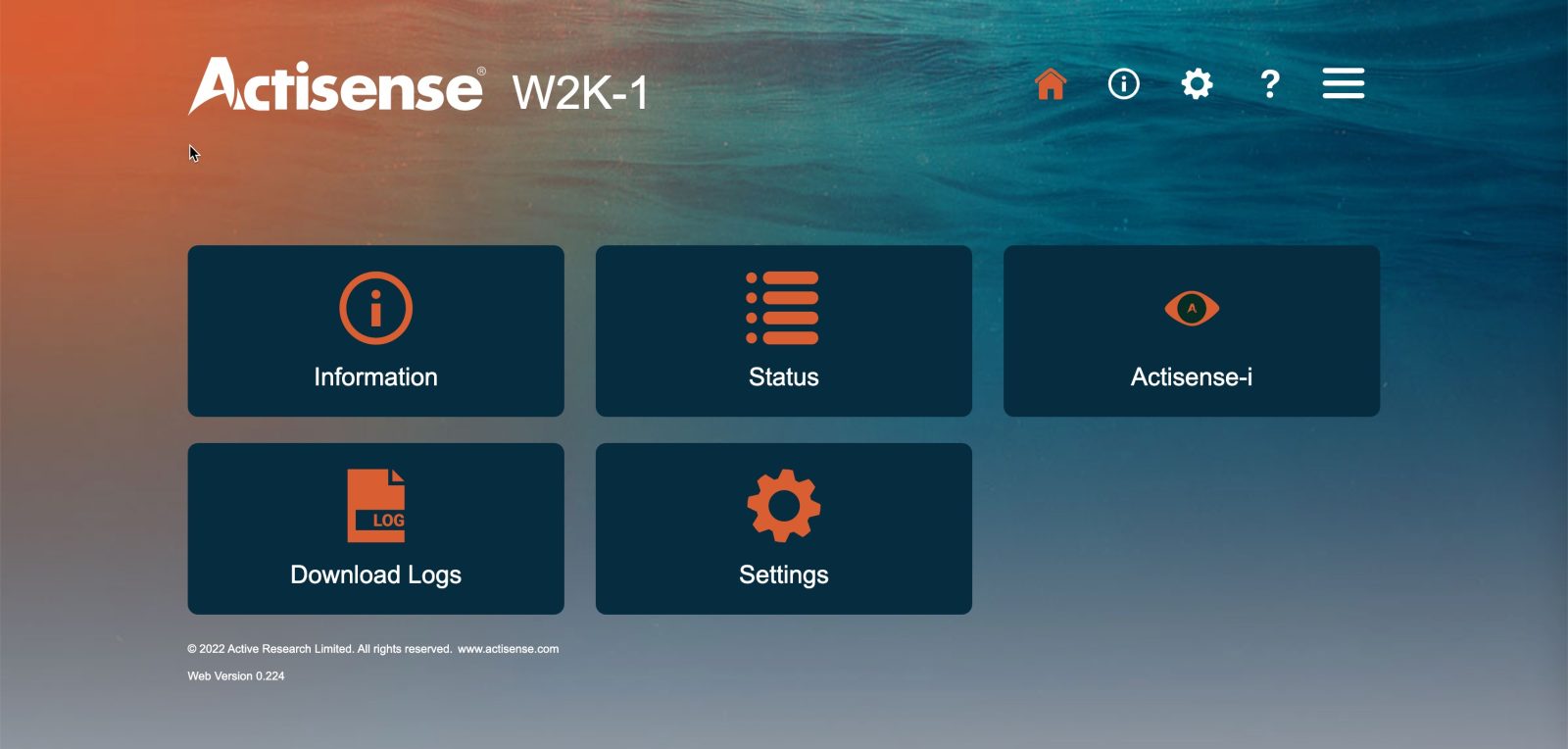
Actisense’s W2K-1, like Actisense’s other products, is a well-made, straightforward product with a few extra features. The primary focus of the W2K-1 is making data from your NMEA 2000 network available via WiFi to mobile devices and laptop. But now, Actisense has expanded the features of the W2K-1 to include their Actisense-i diagnostics functionality. How does Actisense-i stack up to other NMEA 2000 troubleshooting tools? I’ve spent some time with it and believe it provides useful insight into your network but leaves room for more.
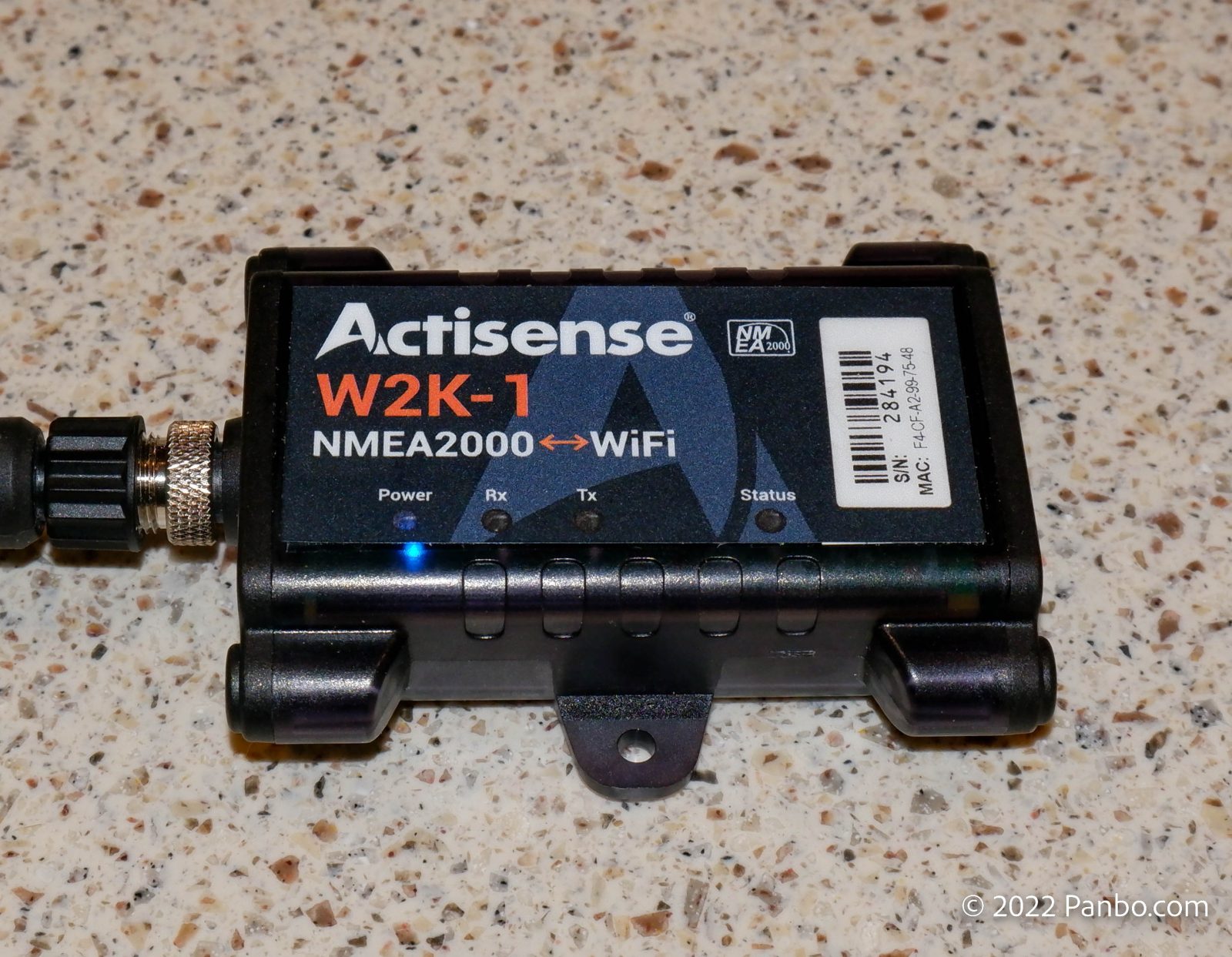
The $250 W2K-1 is a small device, about the size of a pack of playing cards. It has a NMEA 2000 DeviceNet port, a 2.4ghz WiFi radio, and four status LEDs. Nearly all of the NMEA 2000 to WiFi gateways have a built-in webserver, and the W2K-1 is no exception. The web server gives the manufacturers the ability to add some nice additional features. In the case of the W2K-1 Actisense-i, a growing set of troubleshooting tools, joins the existing voyage data recording capabilities.
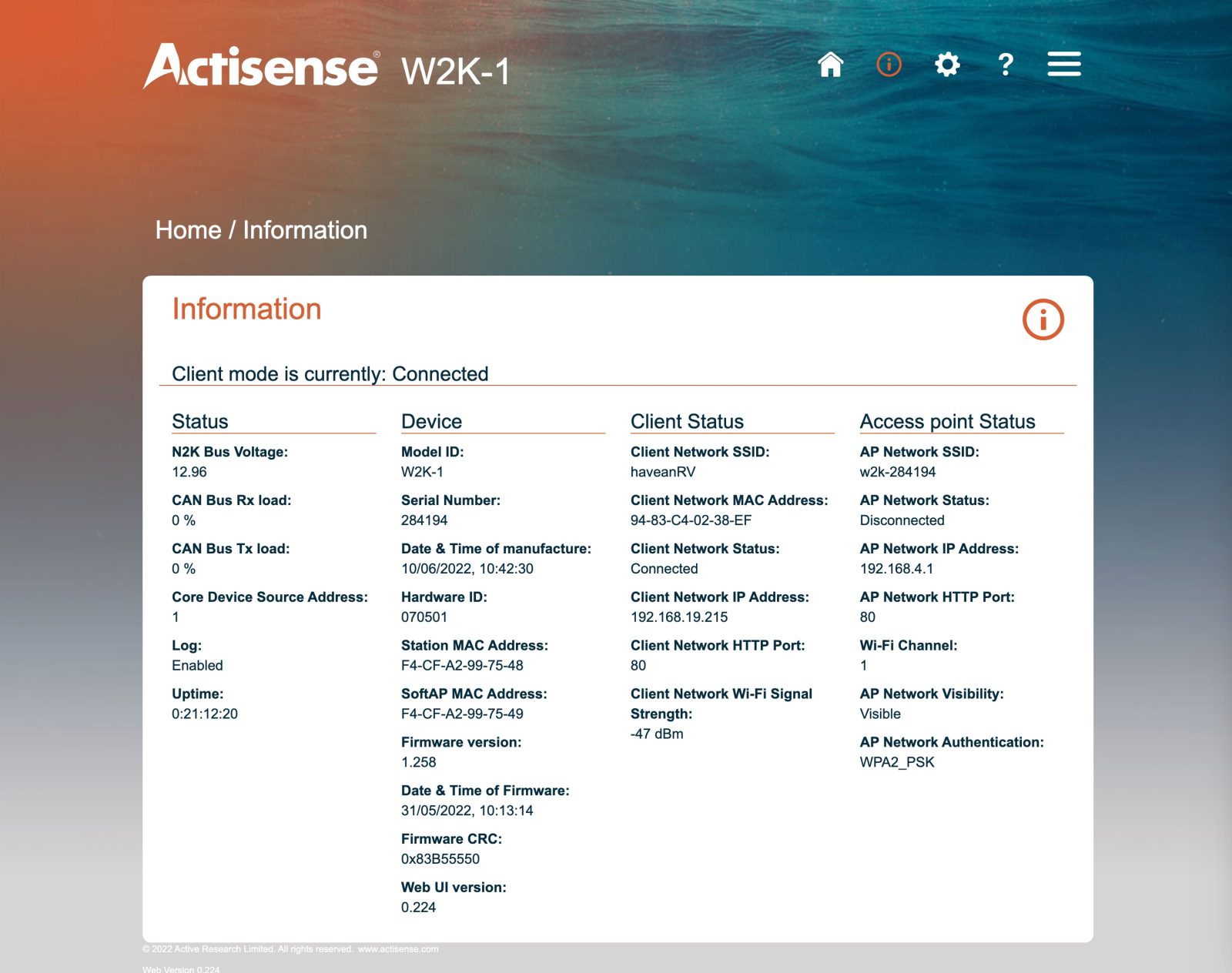
I appreciate that the W2K-1 can connect as a client to an existing network while simultaneously serving as an access point to create its own network. Although I frequently complain about 2.4ghz only marine products, I’ve never really had any troubles with the 2.4ghz band for the low traffic rates NMEA 2000 WiFi gateways typically push. I also recognize that these devices’ physical size and relatively low cost make it difficult to fit a dual-band radio in them.
Actisense-i
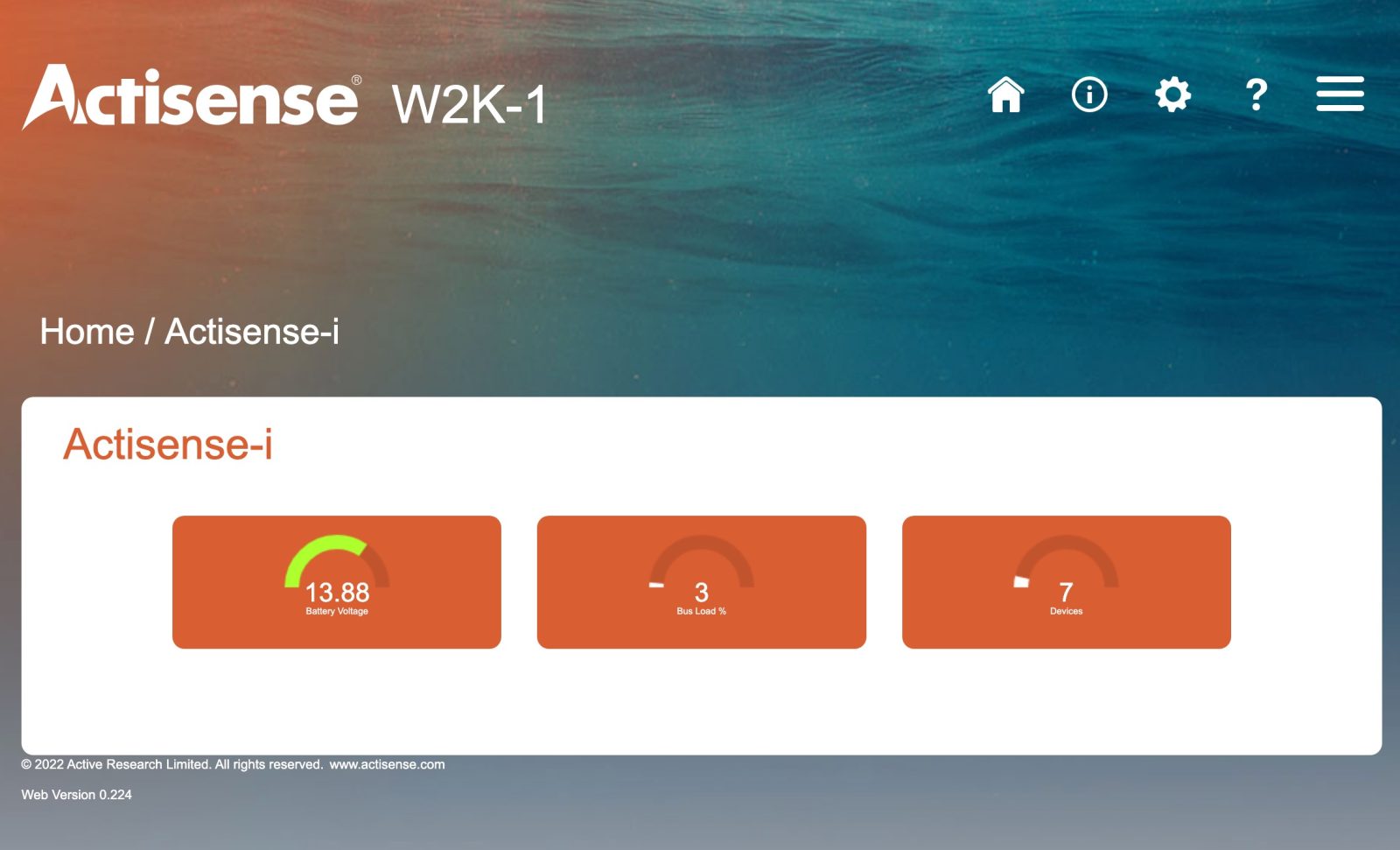
Clicking the Actisense-i tile on the home page of the W2K-1 menu brings up the menu above. You can see voltage, bus load, and the number of connected NMEA 2000 devices at a glance. Clicking any of these three data tiles allows you to drill into greater detail on each measurement.
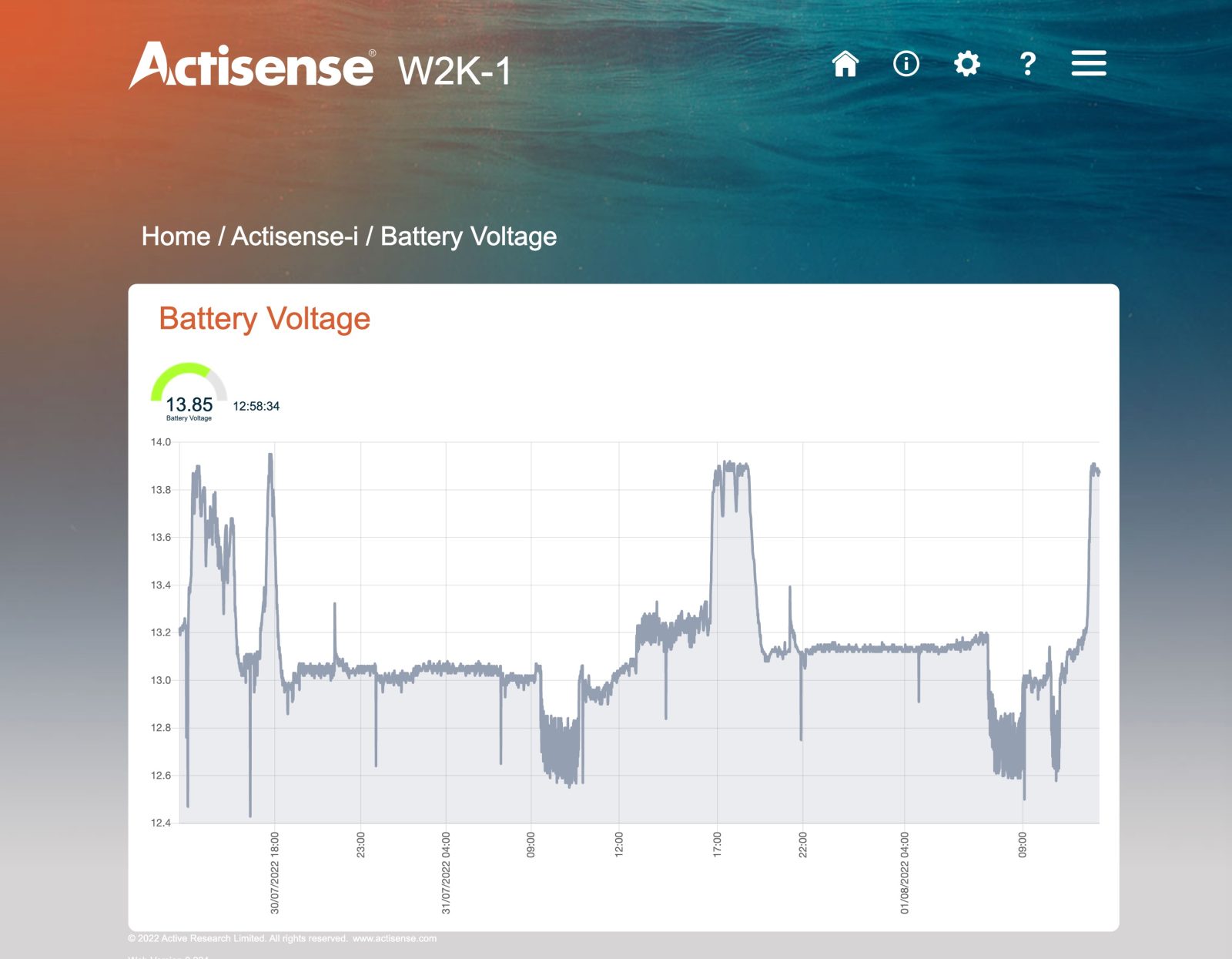
The initial rollout of Actisense-i provides three main functions. First up is a voltage display. A NMEA 2000 network with inadequate voltage can lead to unpredictable operations. Clicking on the voltage tile brings up the historical voltage graph you see above. I think this is really useful information. Voltage issues are often sporadic. The historical graph of voltages allows you to see the voltages over time. The plot above shows the result of solar charging and varying loads on the battery bank serving this NMEA 2000 network.
If there were a problem, perhaps from voltage sag resulting from a large load on the batteries, it would be seen on the graph. But, if you happened to meter your network when that load wasn’t on, you wouldn’t see the problem or be able to correlate the source.
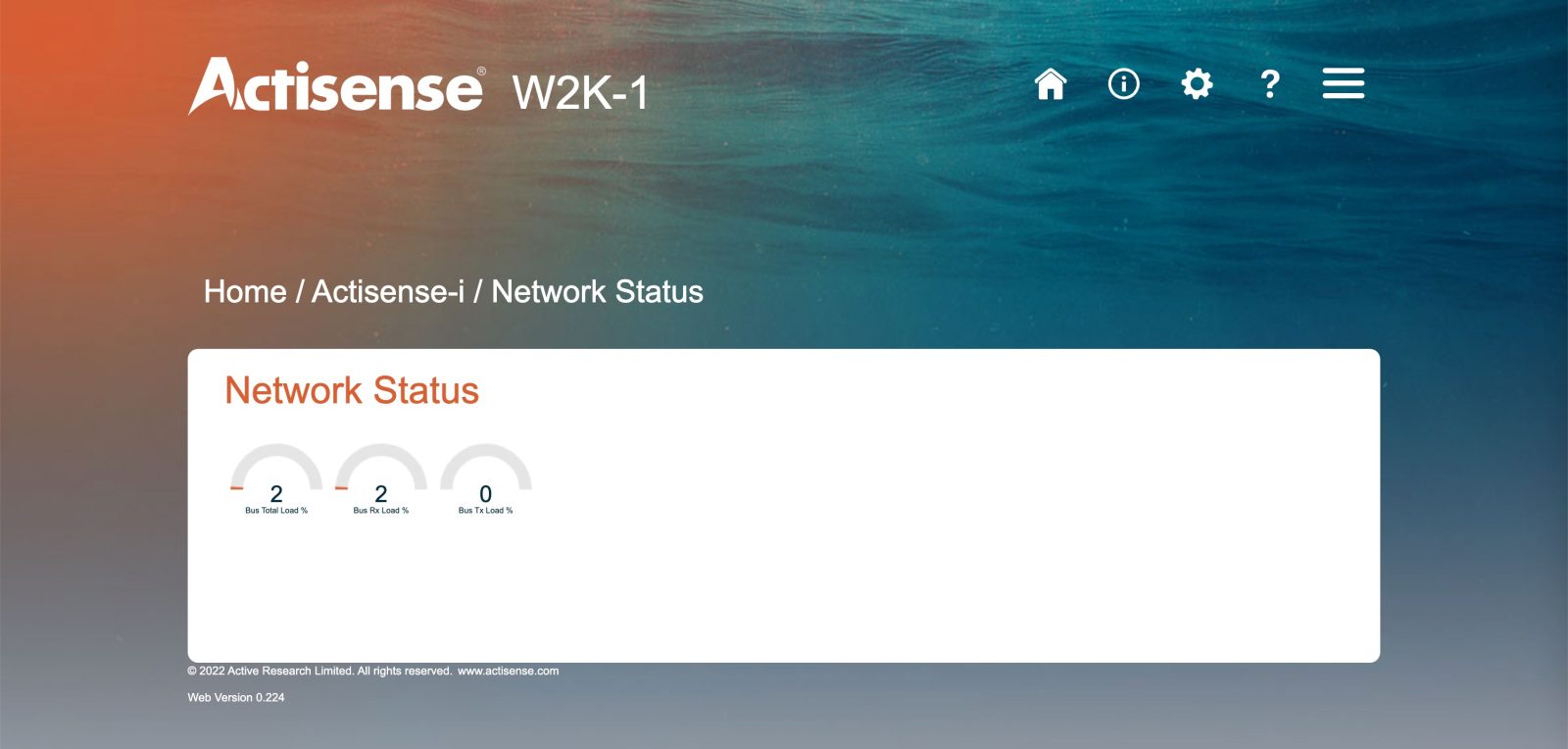
Actisense-i also allows you to view the overall load on your NMEA 2000 bus. NMEA 2000 networks have a bandwidth of 250 kilobits per second. As network utilization creeps over 50 percent, the network’s performance will typically begin to degrade. Obviously, the test network the W2K-1 is monitoring is nowhere near that threshold. The bus load information would also benefit from a historical graph view. Additionally, it would be great to be able to drill into the bus load and see which devices are driving the load.
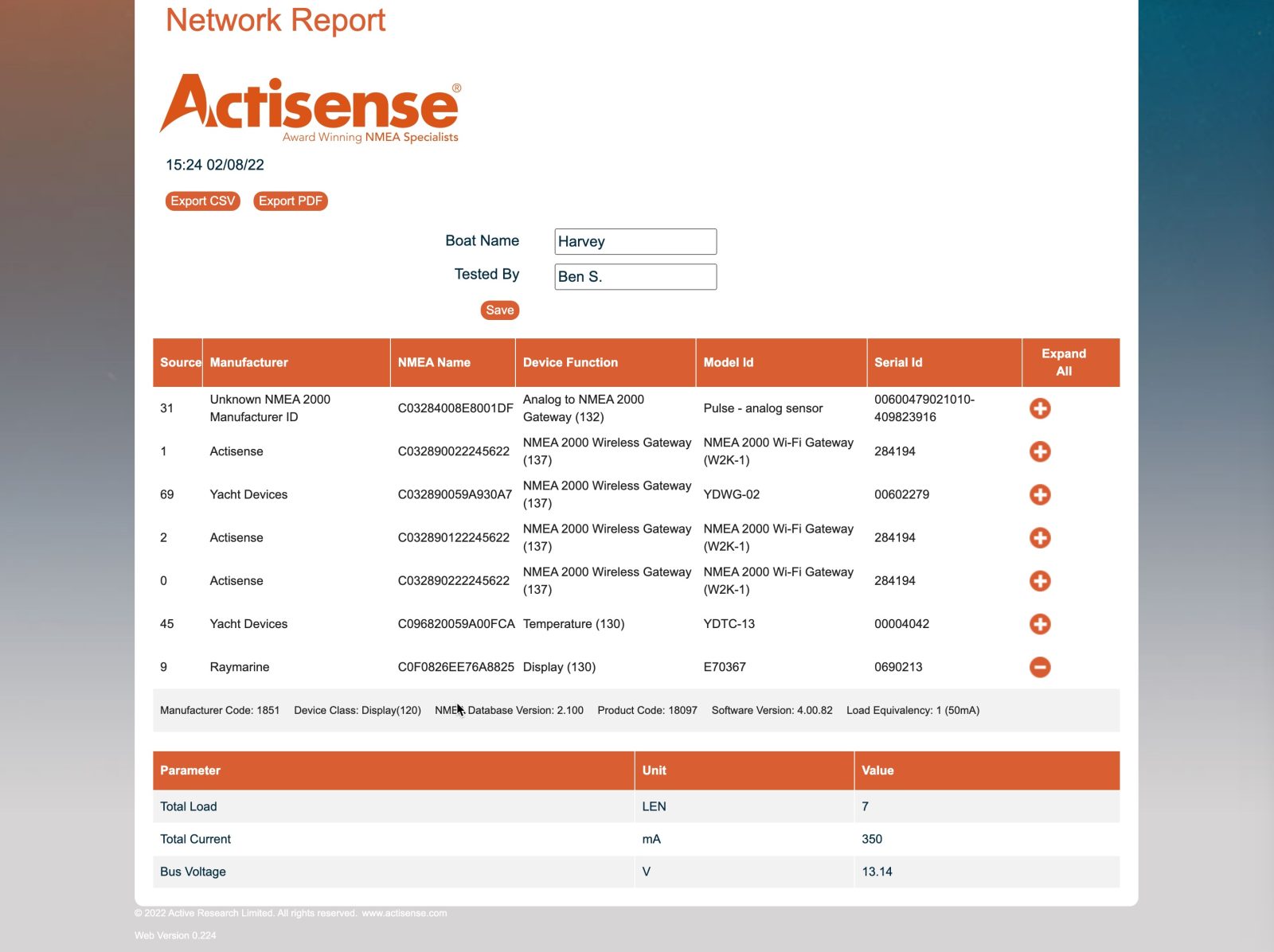
Actisense-i’s third and final function gives a summary view of the devices on the network. Here, you can see all the devices, their network address (labeled as Source above), Manufacturer, and model and serial number information. You can get more information on a device by clicking the plus sign on the right side of its entry.
Additionally, the network can be named, and a report exported that lists all the devices on the network. Similar to when I reviewed Digital Yacht’s NavDoctor, I think this is excellent information for an installer about any network they’ve worked on. I routinely receive calls from the owners of boats I’ve worked on many months before. Refreshing my memory of their config with a network report is extremely helpful.
Improving Actisense-i
First, I want to credit Actisense for adding diagnostics to the W2K-1 with Actisense-i. It’s a cost-effective way to gain insight into your NMEA 2000 network. That said, I think some additional functionality would really enhance the utility of Actisense-i. For example, I’d love to see the ability to list the PGNs transmitted and view the data transmitted by each device. As I mentioned above, I really like the historical graph of network voltage and hope Actisense will use that for other data they make available.
EBL Reader and NMEA Reader
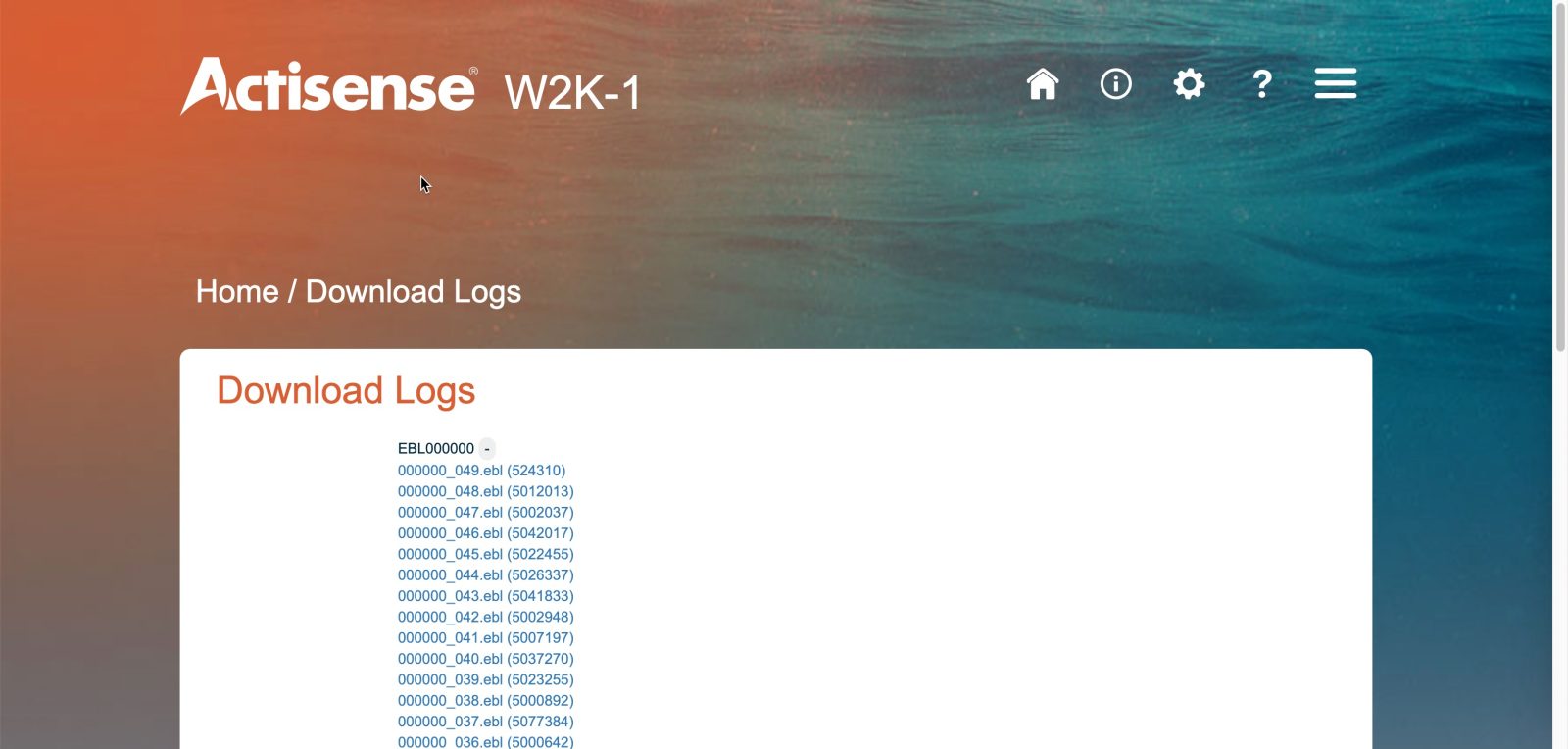
The W2K-1 comes with an 8 gigabyte MicroSD card inserted into the device. Actisense uses the storage in this card to record NMEA 2000 network activity. Their information suggests that on a typical network, the 8gb card will store about 16 days of network activity. The card can be replaced with a larger one if you want to store activity over a longer period.
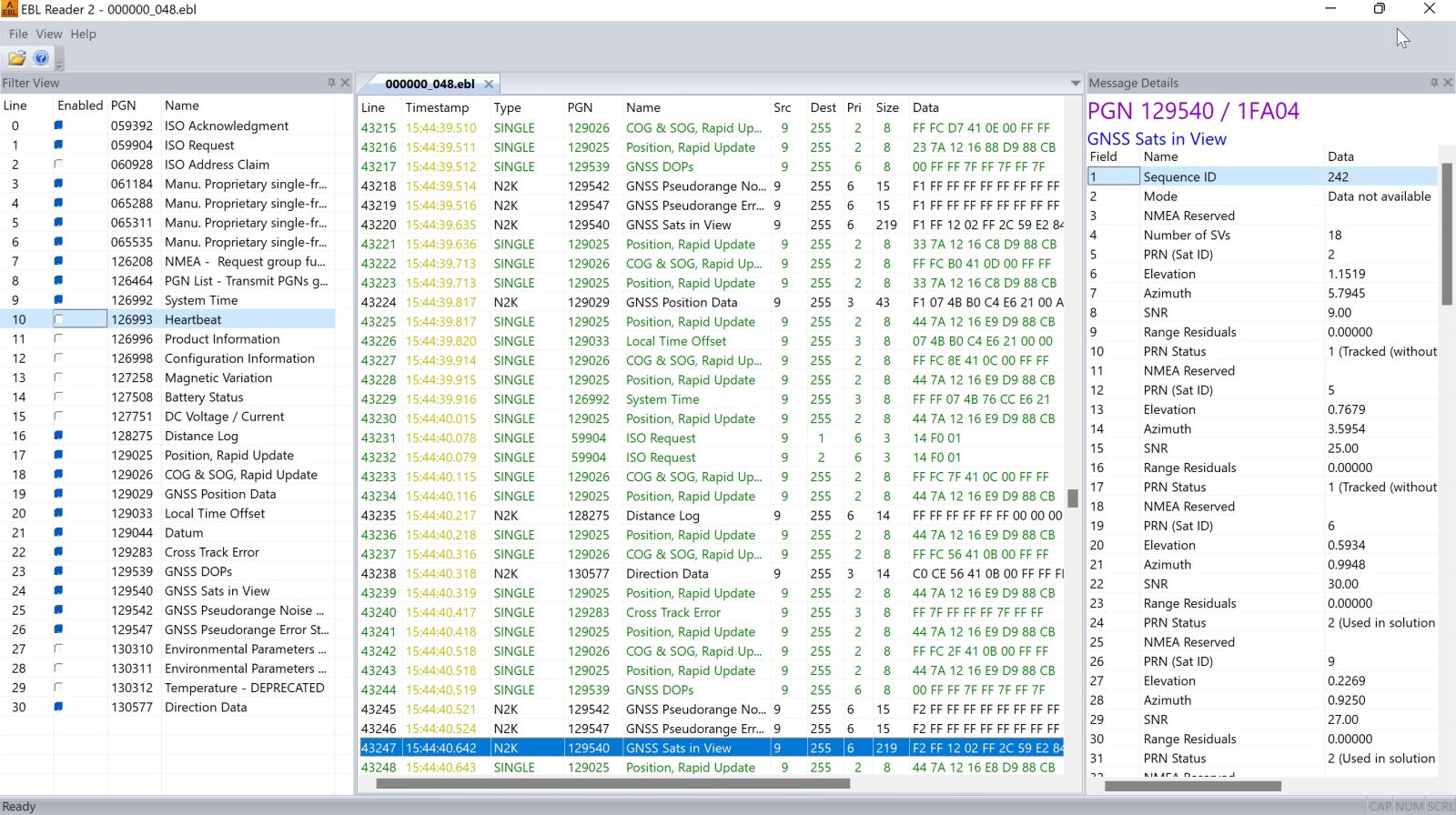
NMEA 2000 recordings are stored as EBL files. Actisense’s free EBL Reader provides in depth analysis of the devices on the network and their activity. But, EBL reader only works on recorded files, so you can’t analyze activity in real time.
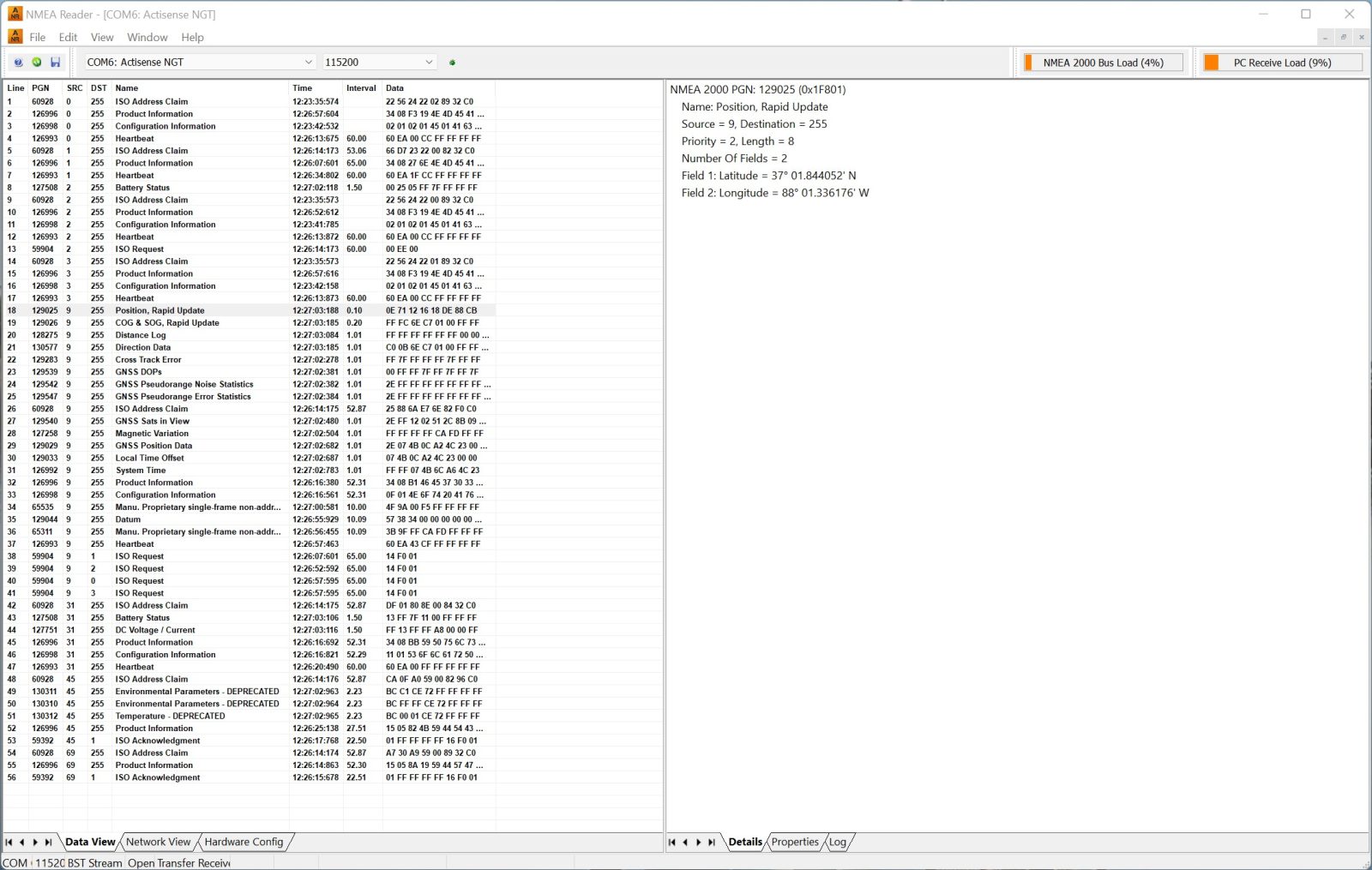
Real-time analysis is possible with Actisense’s NMEA Reader and an NGT-1. The real-time connection to a NMEA 2000 network allows you to see data as it comes in and configure some devices. Currently, NMEA Reader only supports a direct connection via an NGT-1. I’m hopeful that a future update will allow NMEA Reader to leverage a W2K-1 for connection to a NMEA 2000 network.
A W2K-1 with Actisense-i provide valuable insight into what’s happening on the network and does it at a very attractive price. At $249, the W2K-1 is a NMEA 2000 to WiFi gateway, voyage recorder, and provides basic NMEA 2000 diagnostics. The NavDoctor is a $450 troubleshooting tool that doesn’t provide the voyage recording or NMEA 2000 to WiFi gateway functionality. Actisense is actively developing enhancements and new features for Actisense-i, so I’m looking forward to seeing how they can improve the tools.




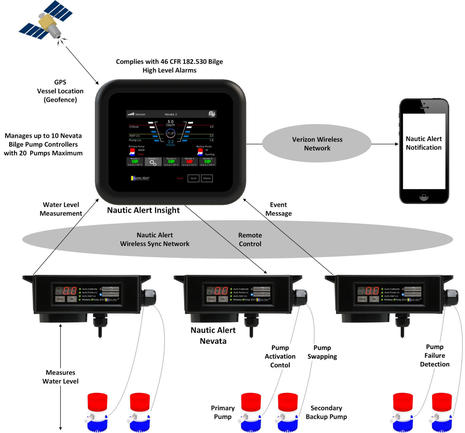








On my new build NMEA network the installers have a plan or drawing of the nmea 2000 network. At each load (wind sensor, chart plotter etc) they show the new voltage after voltage drop. I assume that is just using math by knowing the resistance of each item. I would like a device that could show the actual voltages at each item.
Jason,
That’s an impressive amount of diligence by your installers. But, I would guess they’re probably measuring the voltage in a single location on the network but noting it as each load is applied. Though, as I said, that’s a guess.
-Ben S.
Thanks ben
Why ?
If they actually measure the voltage at each spur/device, it would be an excellent tool to spot a cable/connector degradation. Not a big deal for us little boats, but for large ones, that might be quite valuable.
Hartley
Hopefully the ESP32-C5 will allow us to start getting more devices that can also participate on 5Ghz Wifi networks.
Happy to report that Actisense just added many interesting new features to the W2K-1:
https://actisense.com/news/new-features-alert-w2k-1-nmea-2000-wi-fi-gateway/